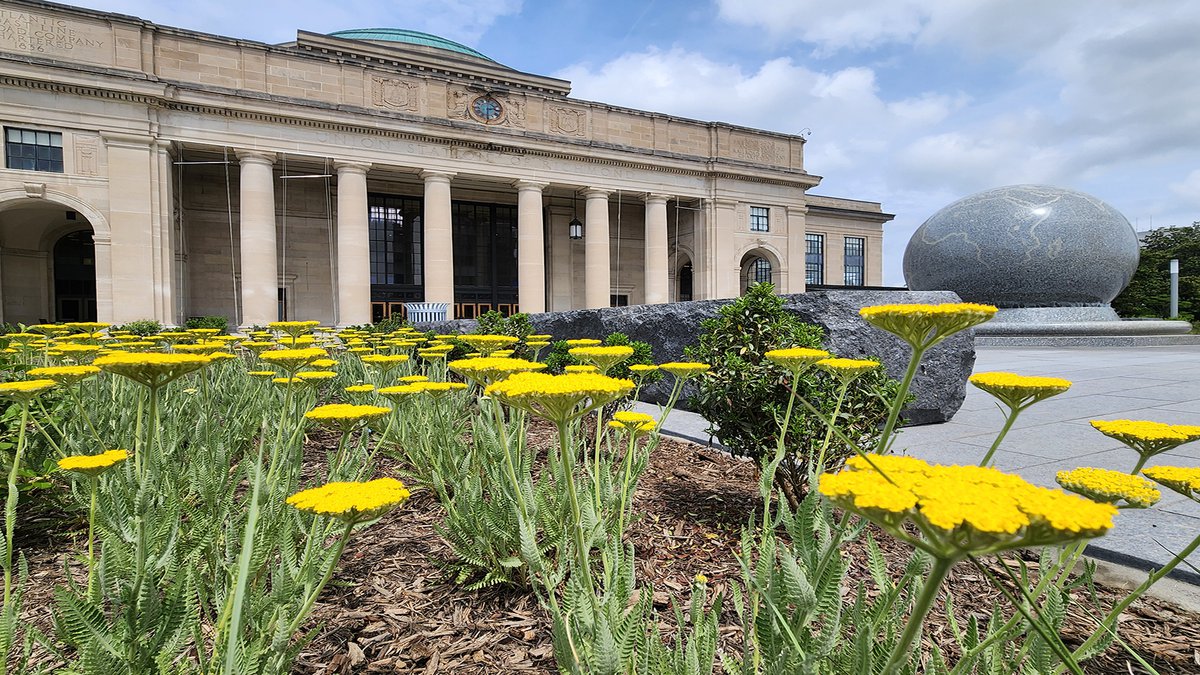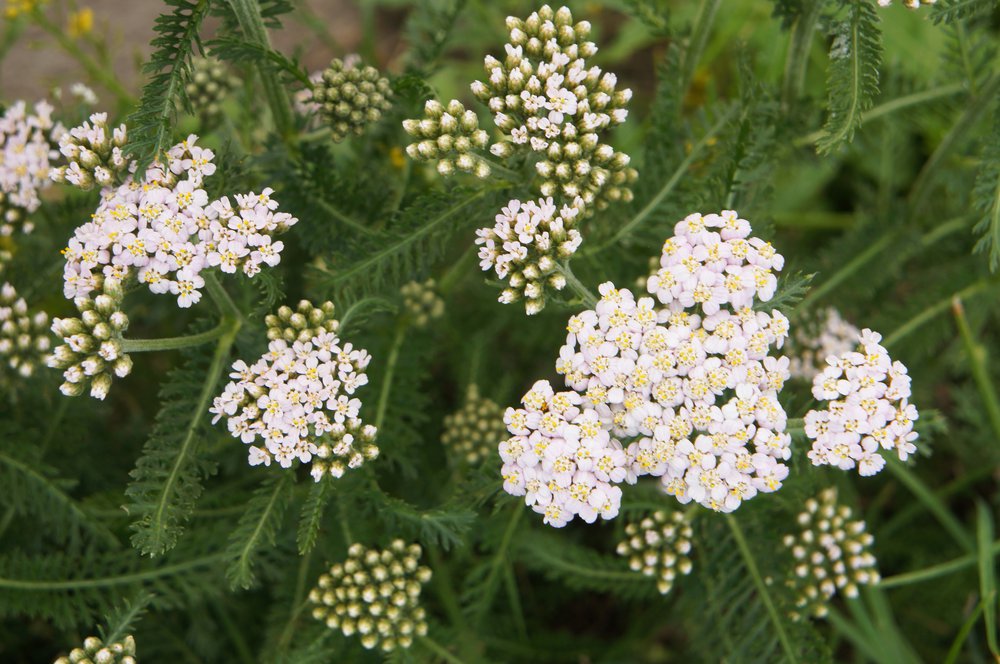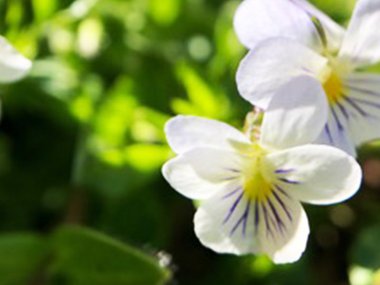And the Winner is ... Yarrow!
It may be called “common yarrow” but this plant is far from boring. In fact, yarrow has been dubbed the 2024 Herb of the Year by the International Herb Association (IHA). Who’s common now!?!
We’re celebrating this prestigious honor by showcasing the herb’s key attributes in both written and physical form. You can read all about it here, then see the number one herb in the new greenspace at the Science Museum.

The IHA’s Horticultural Committee evaluates possible herb-of-the-year choices based on the plant being outstanding in at least two of the three major categories: medicinal, culinary or decorative. Do we have a triple threat on our hands? Let’s find out.
What’s In a Name?
Yarrow is commonly referred to by a handful of other names that you might not like to be called on the school yard: soldier’s woundwort, bloodwort, nose bleed, devil’s nettle and stenchgrass. The latin name, Achillea millefolium, is much more regal! The genus Achillea is named after the Greek warrior god, Achilles. The species name millefolium means thousands of leaves. These names both allude to the remarkable medicinal properties of Achillea millefolium.
A Yarrow a Day Keeps the Doctor Away
For ages, common yarrow has been used worldwide to treat wounds and other ailments. Legend has it Achilles himself used yarrow during the Trojan War to help heal the wounds of his soldiers. Evidence suggests even our oldest human relatives, the Neanderthal, used yarrow as a medicinal plant after researchers found residue in Neanderthal teeth at an excavation site in Northern Spain.
What Achilles and the Neanderthals figured out was that, when crushed, the yarrow leaves release tannins that assist with constricting blood vessels and blood clotting. Compresses of tannin-rich crushed yarrow leaves could slow or stop the bleeding of wounds while also acting as an antiseptic to reduce the chance of infection.
In addition to treating wounds, the plant has been used by various cultures as a tea to soothe colds, fever, nausea, headaches and arthritis. It’s also been known to help with gastrointestinal disorders, stimulate blood circulation for high blood pressure and to improve symptoms related to kidney disorders.

Where to Witness a Medical Marvel
Yarrow is often thought to have been introduced to the US during colonial times, but botanists have discovered genotypes native to North America. The plant is found throughout the world, and is indigenous to Asia, Europe and North America. The widespread distribution alludes to its reproductive resilience and ability to tolerate disturbance and drought. Yarrow occurs naturally in meadows, prairies and naturalized areas and can often be seen along roadsides. There’s that resilience at work!
If you just can’t resist the attractive flowers, you’re not alone! Butterflies, bees and other insects are all drawn to the variety of colors of yarrow, including yellow, pink and white.
If you choose to plant yarrow in your garden, keep an eye out: the plant spreads by rhizomes and self-seeds regularly. This means yarrow can sometimes become a bully in an ornamental garden and try to take over its plant neighbors.
When it came to selecting plants for the newly completed Phase 2 of The Green, of course we selected the best of the best. We just didn’t realize at the time that we’d have a celebrity herb on our hands. Now that yarrow has made the herb big-leagues, we know guests will be clambering just like paparazzi for that perfect photo of it in full bloom!


